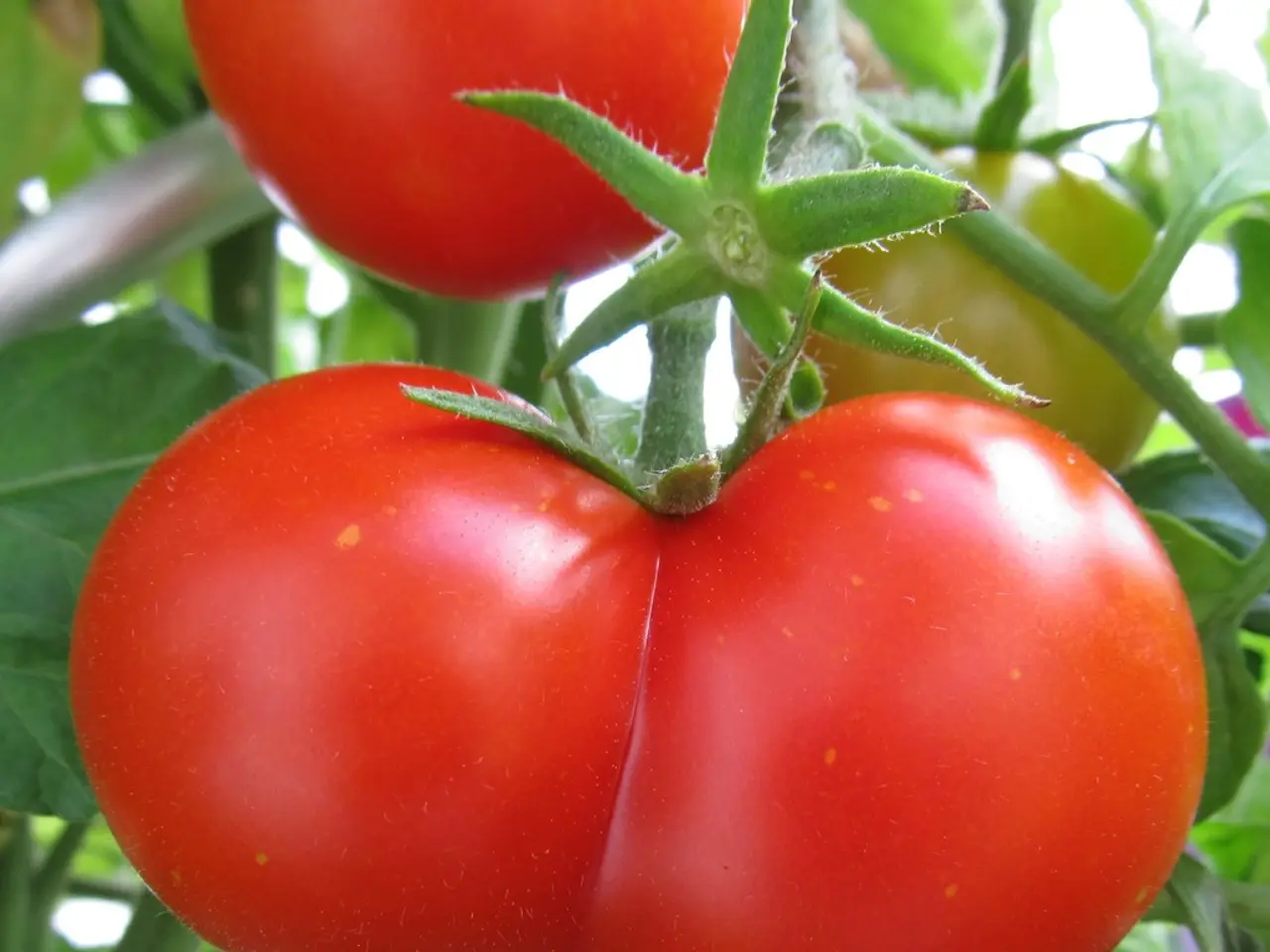Ancient DNA analysis reveals that potatoes originated from tomatoes and a different South American plant around 9 million years ago
In a groundbreaking discovery, scientists have solved the long-standing mystery of where potatoes came from. The evolutionary history of potatoes involves an ancient hybridization event between the ancestors of modern tomatoes and a closely related group of plants called Etuberosum, around 8.6 to 9 million years ago [1][2][3].
This event, which took place within the Solanum genus, gave rise to the potato lineage. The gene contribution from the tomato ancestor enabled the development of larger tubers, which allowed potatoes to reproduce asexually and spread effectively, particularly in mountainous regions of western South America.
The potato plants resulting from this match produced tubers, which were linked to several genes. The gene SP6A, which came from the Tomato lineage, evolved in potatoes to provide instructions on when to make tubers. On the other hand, the gene IT1, involved in forming tubers, came from the Etuberosum side [1][2].
Tubers, the swollen, underground organs that store water and nutrients, were developed in the Petota lineage due to interbreeding. This ability promoted the geographical expansion of potatoes and prevented mating with Etuberosum and Tomato plants, allowing Petota to evolve into a completely new lineage [1][2].
The ancestors of modern Tomato and Etuberosum plants did not have tubers. The Tomato lineage consists of 17 living species, including the salad essential Solanum lycopersicum. The Etuberosum lineage has three living species native to South America [1][2].
The ability of potato plants to store nutrients and water likely helped them survive in harsher environments than Etuberosum and Tomato plants. Evolving a tuber gave potatoes a huge advantage in harsh environments, fueling an explosion of new species and contributing to the rich diversity of potatoes we see and rely on today [1][2].
The team of researchers analysed the genomes of 128 Petota, Tomato, and Etuberosum plants to resolve the evolutionary relationships between these lineages. They published their findings in the journal Cell on July 31 [1][2]. This study used advanced genomic tools that were not previously available, providing new insights into the evolution of potatoes.
[1] Solanum Genomics Network. (2021). The Potato Genome Sequence. Retrieved from https://solanagenomics.net/potato-genome-sequence/ [2] Laurent Gaveau, et al. (2021). The Potato Domestication Complex and the Origin of Agriculture in the Andes. Retrieved from https://www.nature.com/articles/s41467-021-23901-9 [3] Cell. (2021). The Evolutionary History of Potatoes. Retrieved from https://www.cell.com/cell/fulltext/S0092-8674(21)00754-X
By uncovering the hybrid origins of potatoes, this study provides valuable insights into the evolution of agriculture and the domestication of crops. It also highlights the importance of genetic diversity in the development of new traits and the adaptation of plants to harsh environments.
- The discovery sheds light on the importance of genetic diversity in the development of new traits, such as the ability of potatoes to store water and nutrients, which allowed them to adapt to harsh environments.
- This research in environmental-science corroborates the theory that advancements in science and technology, including genomic tools, can significantly contribute to our understanding of the world's crops and their evolutionary history, particularly in the case of potatoes.




